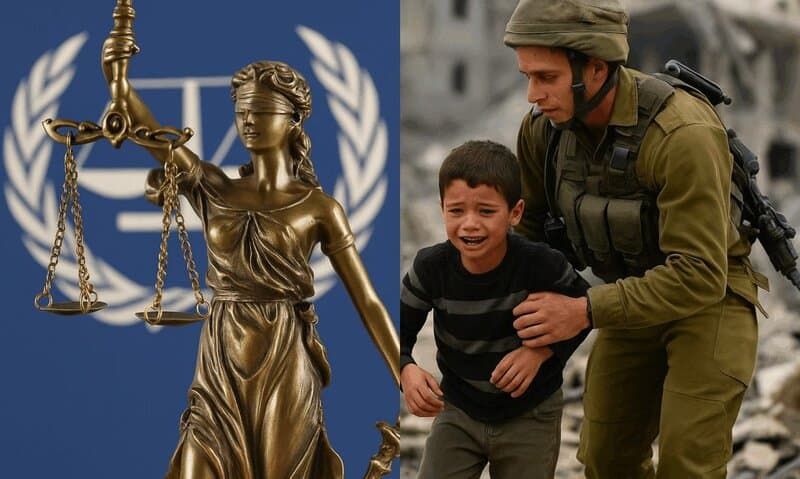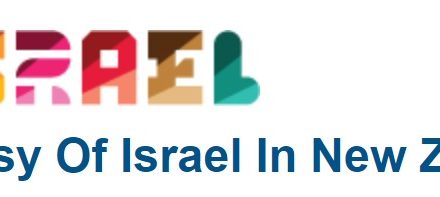By Greg Bouwer on the Israel Institute of NZ…
In the wake of the ongoing conflict between Israel and Hamas in Gaza, the word “genocide” has emerged with increasing frequency in academic, activist, and political circles. It is a grave accusation — one that carries not only legal implications under international law but also profound moral and historical weight. As such, it must not be made lightly or rhetorically.
To assess whether this charge is legitimate or merely polemical, we must move beyond slogans and social media outrage and apply a disciplined, legal, and evidentiary framework. One such framework is the “Three I’s”: Intent, Implementation, and Implications. This tripartite analysis offers a systematic method for evaluating whether the threshold of genocide has truly been met.
Intent: The Core of Genocide
Genocide is not defined by death tolls alone. At its heart lies intent — the specific and demonstrable purpose to destroy, in whole or in part, a national, ethnic, racial, or religious group. This is clearly outlined in the 1948 Genocide Convention and reiterated in Article II of the Rome Statute of the International Criminal Court.
In the case of Israel’s military actions in Gaza, the key question is whether there is credible, verifiable evidence that Israeli leaders or institutions have expressed or enacted an intent to eliminate the Palestinian people as such.
Critics often cite inflammatory remarks by fringe political figures, but international law does not consider isolated or extremist rhetoric to constitute state policy. Tribunals such as the ICTY and the ICC look for consistent, authoritative, and institutional expressions of intent — typically found in policy directives, military orders, or official communications.
By contrast, Israeli officials — from the Prime Minister to the Chief of Staff — have consistently stated that the objective of their military operations is the destruction of Hamas, a designated terrorist organization responsible for murdering over 1,200 civilians on October 7, 2023, and for continuing to hold Israeli hostages. Targeting an armed adversary, even one embedded among civilians, is not the same as targeting a people for extermination.
This is especially evident when juxtaposed with the explicit genocidal intent and actions of Hamas. Hamas’ 1988 Charter, still unrepealed, calls for the destruction of Israel and cites a Hadith that states, “The Day of Judgement will not come about until Muslims fight the Jews (killing the Jews).” Hamas leaders have issued statements such as:
“The time to kill you [Jews] has arrived. God willing, we will slaughter you.” – Fathi Hammad, 2019
“We will live in Haifa, Jaffa, and Acre.” – Yahya Sinwar, 2022, signalling total elimination of Israel
“The Zionist entity is a cancer to be removed.” – Khaled Mashal, repeated in numerous speeches
These are not isolated outbursts but core ideological expressions. They were echoed in action on October 7, 2023, when Hamas terrorists intentionally targeted civilians, slaughtering over 1,200 people, raping women, burning families alive, and abducting children and the elderly — crimes committed not to secure territory but to terrorize and kill Jews. That is genocide in both intent and effect.
Implementation: Distinguishing Warfare from Extermination
Intent must be matched by implementation. Are the means and methods of Israel’s campaign consistent with a genocidal plan, or are they tragically characteristic of asymmetric warfare in urban terrain?
Hamas deliberately operates from within densely populated neighbourhoods, hospitals, and schools—an egregious violation of the laws of armed conflict. Israel, in response, has conducted airstrikes and ground operations aimed at degrading Hamas infrastructure. Civilian casualties, though tragic and unacceptable in their scale, do not in themselves prove genocide. They may also reflect the consequences of military necessity and the complexities of asymmetric combat.
Importantly, Israel has taken steps — however imperfect — to mitigate civilian harm: issuing evacuation orders, establishing humanitarian corridors, coordinating aid shipments, and at times pausing operations. These measures are often cited by critics as evidence of displacement, but this misconstrues their intent and legal significance.
The relocation of civilians within Gaza — especially the calls to move South from Northern Gaza — has been explicitly framed by Israel as a temporary and precautionary measure, designed to protect civilians from active combat zones. This is not forced displacement for the purpose of ethnic cleansing or demographic erasure, but a wartime humanitarian safeguard.
Indeed, international humanitarian law (IHL) encourages such protective evacuations in areas of active hostilities, provided they are not used as a pretext for permanent removal or to harm the population. The fact that Israel has not barred return, nor taken steps to annex or repopulate evacuated areas, further undercuts any claim of genocidal or expansionist intent.
By contrast, in genuine genocidal campaigns—such as in Bosnia or Darfur—evacuations were not designed to avoid harm, but were part of a systematic plan to eliminate or permanently displace targeted populations. No such pattern is evident in Gaza.
While no military campaign is without error, the existence of precautions to reduce civilian suffering stands in contrast to the hallmarks of genocidal operations, such as death lists, forced deportations, and mass executions, as seen in Rwanda and Srebrenica.
Hamas, by contrast, not only seeks the death of Israeli civilians but systematically uses its own population as human shields — locating command centres in schools, mosques, and hospitals to maximise civilian casualties and exploit them for propaganda. This is not just a war crime; it is the implementation of genocidal ideology through terror tactics.
Implications: The Outcomes and Their Meaning
Finally, we must examine the implications of Israel’s actions. Has there been a measurable attempt to erase Palestinians as a group — culturally, demographically, or territorially?
The humanitarian toll in Gaza is immense. But even profound suffering does not equate to genocide unless it is intended to bring about the destruction of the group in question.
Israel has not opposed the existence of a Palestinian people. On the contrary, it has repeatedly engaged in negotiations for a two-state solution and has distinguished — both rhetorically and operationally — between Hamas and the Palestinian civilian population. Even amid war, aid continues to flow into Gaza, and plans for post-war governance and reconstruction are actively under discussion.
If genocide were truly the goal, we would expect to see a strategy of erasure — forced mass deportations, systematic ethnic cleansing, or policies aimed at cultural annihilation. Instead, we see a military campaign aimed at neutralizing a terrorist regime that initiated hostilities, continues to hold civilians hostage, and uses its own people as human shields.
Hamas, on the other hand, has made clear through words and actions that the implication of its campaign is the destruction of Israel and the death of Jews, not coexistence or political resolution.
Conclusion: The Danger of Weaponised Accusations
The accusation of genocide should be reserved for the most egregious crimes in human history. It must not be wielded as a political cudgel or a rhetorical flourish. To do so not only misrepresents the nature of the current conflict, but also cheapens the memory of genuine genocides — from the Holocaust to Rwanda to Darfur — and erodes the meaning of the term itself.
The “Three I’s” framework — Intent, Implementation, and Implications — provides a sober, legally grounded method for evaluating genocide claims. On each count, the charge against Israel fails to meet the required threshold, while Hamas clearly satisfies it.
There are grave issues to address: the protection of civilians, the delivery of humanitarian aid, and the long-term path to peace. But labelling Israel’s actions as genocide is not only legally unfounded — it is morally irresponsible. And it does nothing to bring Israelis and Palestinians any closer to the justice, security, or reconciliation they both deserve.
This article was first published on the Israel Institute of NZ website, and is republished here with permission.
Greg Bouwer has also recently written articles on…
“Aiding Hamas, Abandoning Gaza: The United Nations’ Moral Collapse”;
“Weaponising Humanitarian Chaos: How Hamas Sabotages & Blames Israel”; and
“The Gaza Famine That Wasn’t: Why NZ Media Must Stop Parroting Hamas Propaganda”.
They can be read HERE, and HERE, and HERE.






